
Addiction is a chronic, relapsing brain disorder characterized by compulsive engagement in rewarding stimuli, despite harmful consequence. It heavily impacts they way person thinks, feels and acts. And over 2% of the world population are addicted to some sort of drugs. Globally making it to 155,885,251+ people with substance use disorder, 11.8 M of which are directly or indirectly killed by drugs each year.
So here is a top list of the addiction causing substances on a scale from 0.0 (min) to 3.0 (max), all information is based on the sources listed below.
Take a notice, that legal status of any substance ranges and may vary on its usage, same as to be different from what is shown here.
1. Poppers (alkyl nitrites)
Popper is a slang term given to drugs of the chemical class called alkyl nitrites. Which are being inhaled to get a relaxation effect on involuntary smooth muscles. Those are throat and your “lower back” muscles. Its relaxation effect made it popular in gay community.
| Pleasure | Psychological dependence | Physical dependence |
| 1.6 | 0.7 | 0.3 |
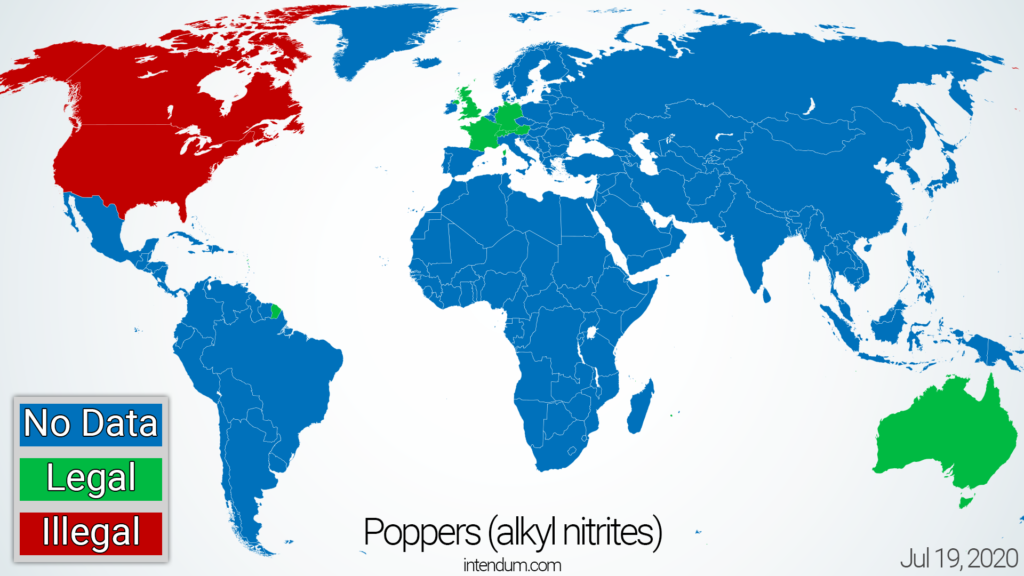
2. Khat/qat also known as miraa
It’s a flowering evergreen shrub or a tree native to the Horn of Africa and the Arabian Peninsula. The average height of this plant is 1-5 m (3 ft 3 in-16 ft 5 in). It grows leaves that are being chewed or, less frequently, dried and consumed as a tea. Chewing a khat comes with a state of euphoria, excitement and the loss of appetite. The use of khat predates the use of coffee and is used in a similar social context.
| Pleasure | Psychological dependence | Physical dependence |
| 1.6 | 1.2 | 0.3 |
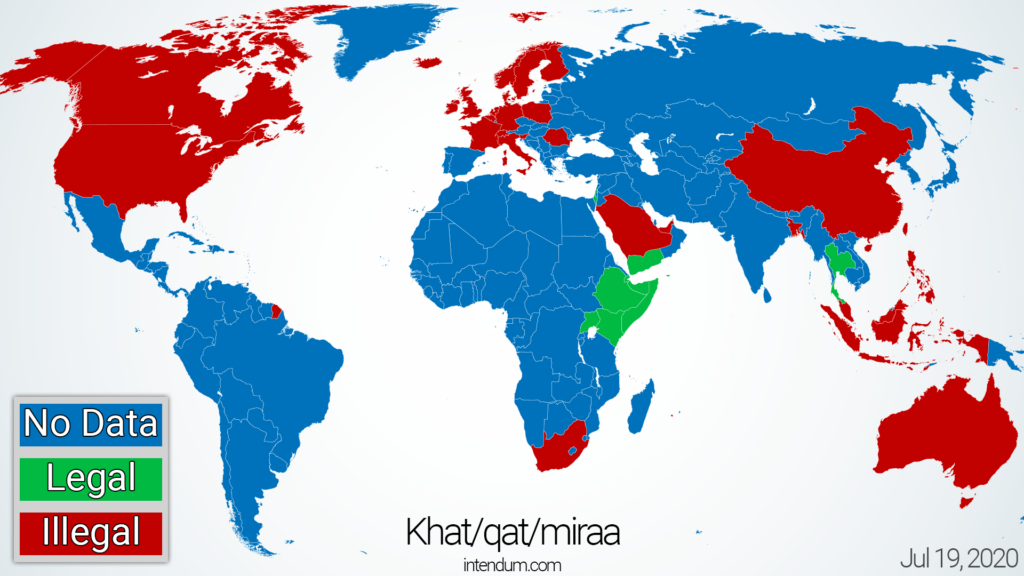
3. Ecstasy/molly/MDMA
It’s a psychoactive drug, that is mostly consumed by mouth in a tablet form. Or sometimes it can be in a crystalline powder form and snorted. Effects from using Ecstasy: altered sensations, increased energy, empathy and pleasure. Also an addiction, memory problems, paranoia, difficulty sleeping, teeth grinding, blurred vision, sweating and a rapid heartbeat.
There is also a risk of death due to increased body temperature and dehydration. It’s easy to recognize an ecstasy user by his/her dilated pupils.
| Pleasure | Psychological dependence | Physical dependence |
| 1.5 | 1.2 | 0.7 |
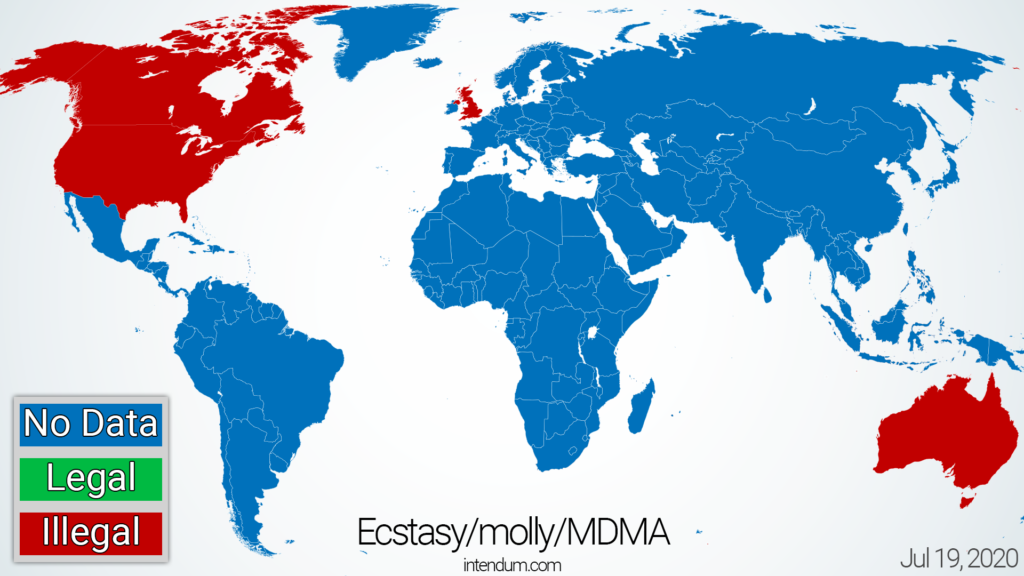
But it’s probably illegal all over the world, since it has no accepted medical uses.
4. LSD
Lysergic acid diethylamide (LSD), was first synthesized in 1938, is a hallucinogenic drug. It is most often sold on a blotter paper and less commonly as tablets, LSD is either swallowed or held under the tongue. Effects of it are often called a “trip”: altered thoughts, stimulating and pleasurable feelings, sometimes terrifying and very unpleasant.
Increased body temperature and dilated pupils are typical for this drug too. Statistic is saying that around 10 percent of people in the United States have used LSD.
| Pleasure | Psychological dependence | Physical dependence |
| 2.2 | 1.1 | 0.3 |
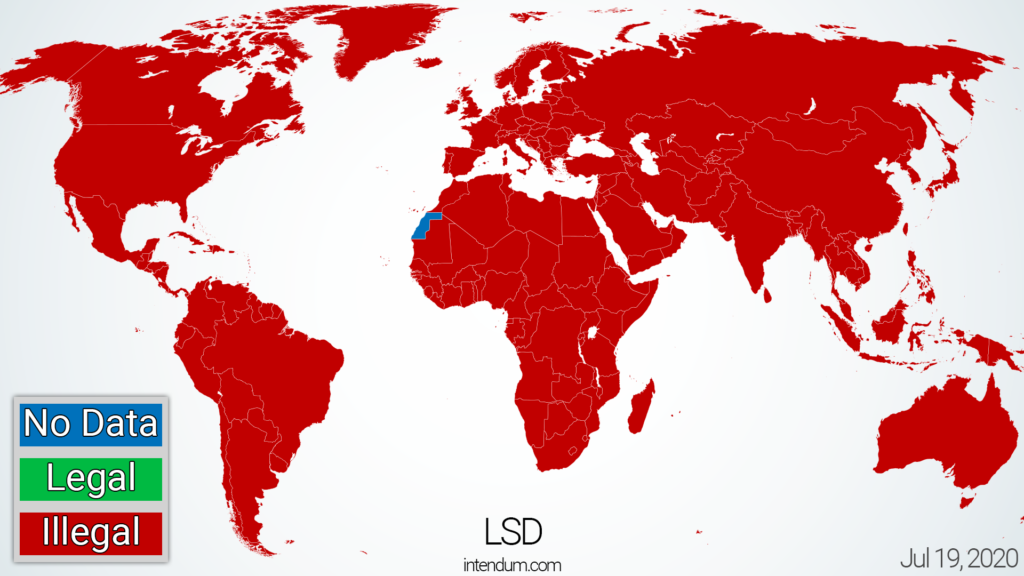
5. Cannabis/marijuana
Cannabis is a genus of flowering plants in the family Cannabaceae, it’s the most widely cultivated, trafficked and abused illicit drug. Half of all drug seizures worldwide are cannabis seizures… When sold, it’s most often is a mixture of dried out leaves, stems, flowers and seeds.
The drug can be consumed in many different ways: smoking, vaporizing, as a tea, edibles or capsules. And about 194 million people, 2.5% of the world population, consume cannabis yearly. Effects that may occur from using it: relaxation, euphoria, anxiety, paranoia, increase in heart rate and hunger.
| Pleasure | Psychological dependence | Physical dependence |
| 1.9 | 1.7 | 0.8 |
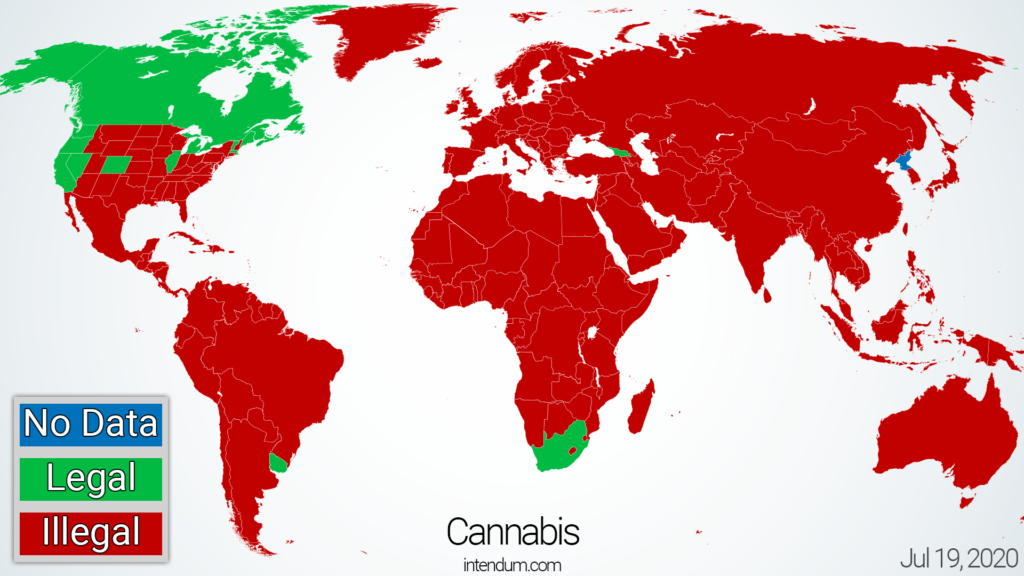
6. Ketamine
Ketamine is a medication mainly used for starting and maintaining anesthesia, but it’s also a hallucinogenic dissociative normally sold on the street as a grainy white powder. Trips from which can last for a couple of hours, bringing you such effects as: slurred speech, immobilization, dream-like and detached feeling, confused and nauseated, relaxed and happy.
Taking ketamine can be fatal, particularly if it is mixed with the other drugs. Long term addiction to that drug comes with flashbacks, memory loss and problems with concentration.
| Pleasure | Psychological dependence | Physical dependence |
| 1.9 | 1.7 | 1.0 |
Ketamine is legally marketed in many countries worldwide, but in most of them it’s being a controlled substance.
7. Alcohol (ethanol or ethyl alcohol)
Isn’t it surprising to see that alcohol has made it further than Ketamine, Cannabis and LSD? It’s a psychoactive drug that is the active ingredient in drinks such as beer, wine and etc. And it’s one of the oldest and most common recreational substance that has been produced by humans for its psychoactive effects for almost 10,000 years.
Alcohol effects: mood lift and euphoria, decreased anxiety, increased sociability, sedation. Short-term adverse effects: impairment of neurocognitive function, dizziness, nausea, vomiting and hangover-like symptoms. Long-term adverse effects: liver damage, brain damage, cancer.
| Pleasure | Psychological dependence | Physical dependence |
| 2.3 | 1.9 | 1.6 |
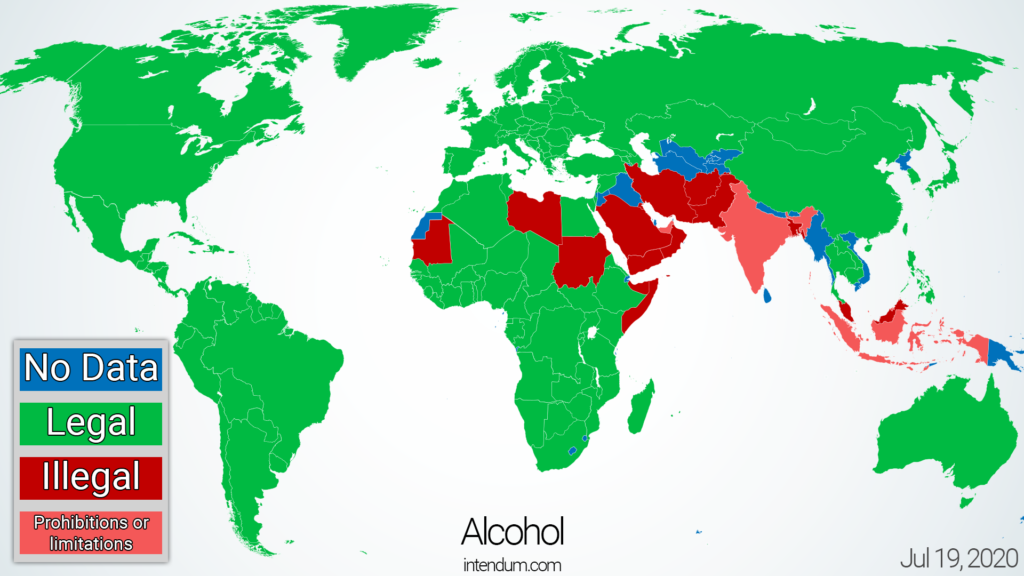
8. Tobacco
It is the common name of several plants in the Nicotiana genus and the Solanaceae family. Tobacco contains the highly addictive stimulant alkaloid nicotine as well, as harmala alkaloids. The plant can be consumed as snuff, chewed or smoked, dipped and as snus.
The use of tobacco comes with such short-term effects: mood stimulation, state of withdrawal, increased blood pressure and heart rate, bad breath. Long-term use of it may cause many diseases affecting the heart, liver and lungs, as well as many cancers.
| Pleasure | Psychological dependence | Physical dependence |
| 2.3 | 2.6 | 1.8 |
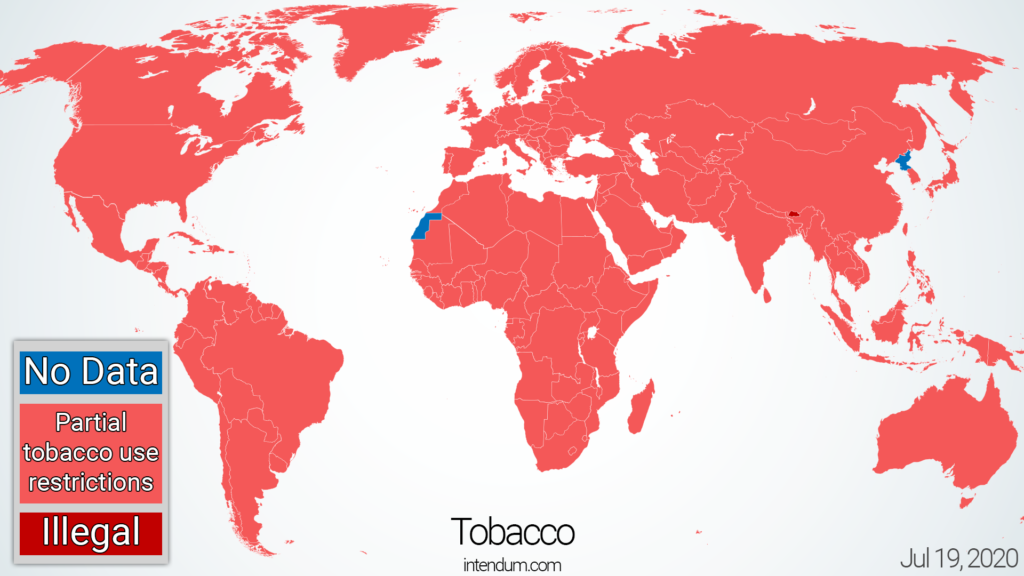
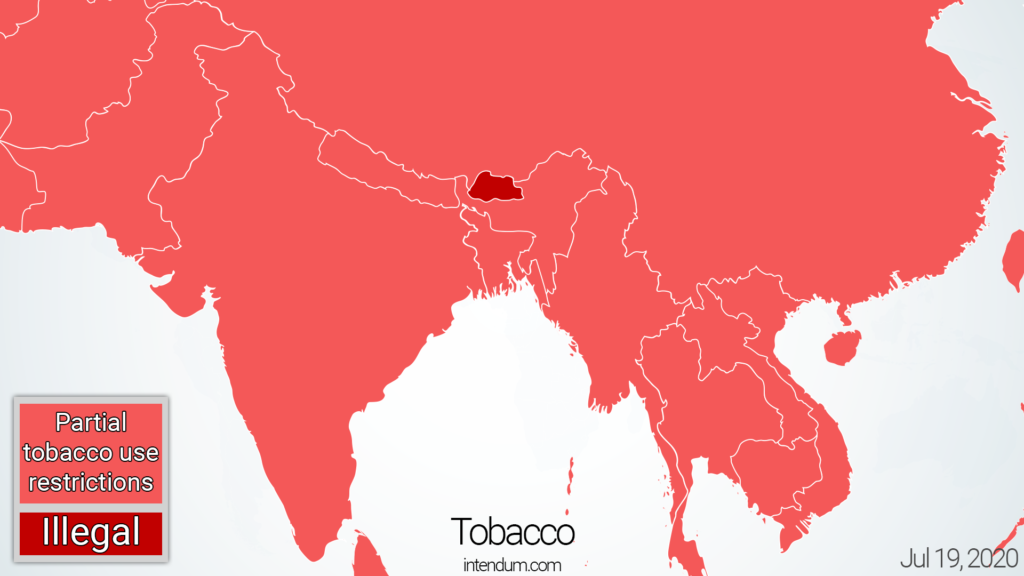
Bhutan is the only and is the first country in the world to have fully banned the sale of tobacco.
9. Cocaine/coke
Cocaine is a strong stimulant that is snorted, inhaled as smoke, or dissolved and injected into a vein. Mental effects from it may include loss of contact with reality, an intense feeling of happiness, or agitation. Physical symptoms may include a fast heart rate, sweating and large pupils.
Cocaine is named after the coca plant from which it is isolated. Coca is traditionally cultivated in the valleys and upper jungle regions of the Andean region (todays Colombia, Peru and Bolivia). Today cocaine is the second most frequently used illegal drug globally, after cannabis. Between 14 and 21 million people use that drug each year.
| Pleasure | Psychological dependence | Physical dependence |
| 3.0 | 2.8 | 1.3 |
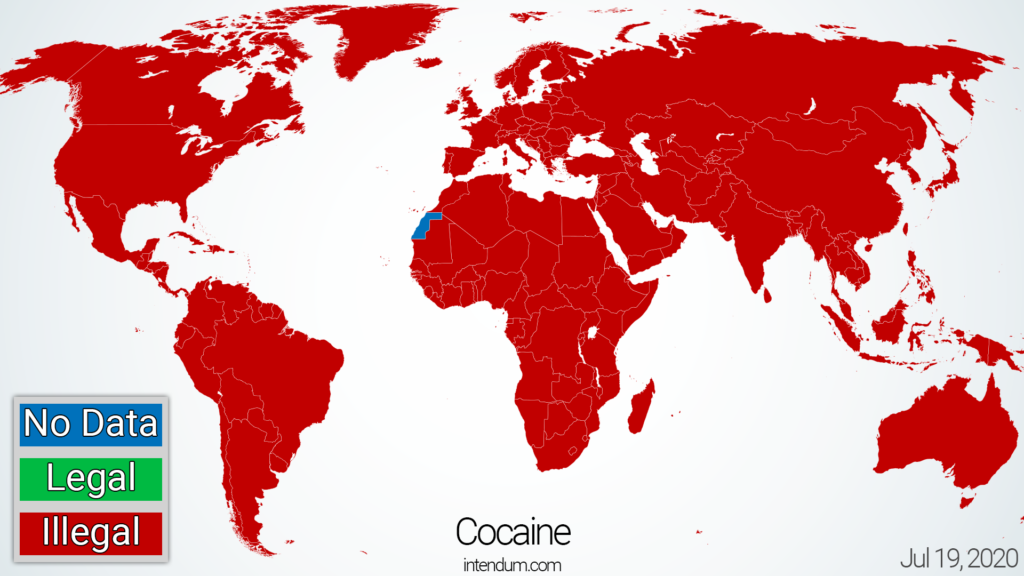
10. Heroin
Heroin is an opioid most commonly used as a recreational drug for its euphoric effects. It’s made from morphine, a natural substance taken from the seed pod of the various opium poppy plants. Heroin is typically injected, usually into a vein, but it can also be smoked, snorted or inhaled.
It’s highly addictive and people who regularly use heroin often develop a tolerance. Which means that they need higher and/or more frequent doses of the drug. People who use it typically report feeling a surge of pleasurable sensation – a “rush”. Short-term effects from using it: dry mouth, warm flushing, nausea and vomiting, severe itching, clouded mental functioning.
Long-term effects: insomnia, collapsed veins, infection of the heart lining and valves, liver and kidney disease, lung complications, including pneumonia, mental disorders, sexual dysfunction for men, irregular menstrual cycles for women.
| Pleasure | Psychological dependence | Physical dependence |
| 3.0 | 3.0 | 3,0 |
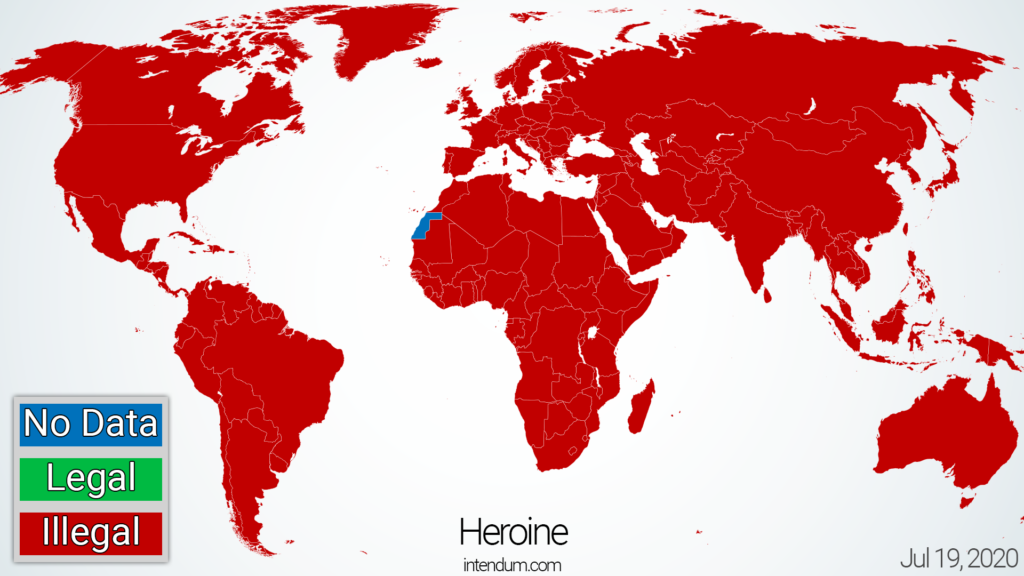
Conclusion
Here’s a table including substances mentioned earlier to sum up.
| Drug | Mean | Pleasure | Psychological dependence | Physical dependence |
| Poppers (alkyl nitrites) | 0.87 | 1.6 | 0.7 | 0.3 |
| Khat/qat also known as miraa | 1.04 | 1.6 | 1.2 | 0.3 |
| Ecstasy/molly/MDMA | 1.13 | 1.5 | 1.2 | 0.7 |
| LSD | 1.2 | 2.2 | 1.1 | 0.3 |
| Cannabis/marijuana | 1.46 | 1.9 | 1.7 | 0.8 |
| Ketamine | 1.53 | 1.9 | 1.7 | 1.0 |
| Alcohol (ethanol or ethyl alcohol) | 1.93 | 2.3 | 1.9 | 1.6 |
| Tobacco | 2.23 | 2.3 | 2.6 | 1.8 |
| Cocaine/coke | 2.36 | 3.0 | 2.8 | 1.3 |
| Heroin | 3.0 | 3.0 | 3.0 | 3.0 |
It’s important to understand that drugs develop tolerance over the time of their usage, forcing people with substance use disorder to take more and more of them. Until the drugs will take the people that we love…
Keep your self safe and don’t be ashamed to ask for the help if you need it!
Credits
Resources used to gather data:
- https://en.wikipedia.org
- https://drugabuse.com/statistics-data/get-the-facts-substance-abuse/
- https://edition.cnn.com/2019/01/02/health/most-addictive-substances-partner/index.html
- https://www.psychologytoday.com/intl/blog/all-about-addiction/201811/rethinking-how-we-measure-addiction
- https://www.ncbi.nlm.nih.gov/pmc/articles/PMC2930133/
- https://sunrisehouse.com/cause-effect/drugs-more-addictive/
- https://www.psychiatry.org/patients-families/addiction/what-is-addiction
- https://www.addictioncenter.com/addiction/
- https://ourworldindata.org/drug-use
- https://www.thelancet.com/journals/lancet/article/PIIS0140-6736(07)60464-4
- https://www.drugs.com/illicit/lsd.html
- https://www.who.int/substance_abuse/facts/cannabis/en/
- https://www.drugabuse.gov
- https://www.talktofrank.com/
